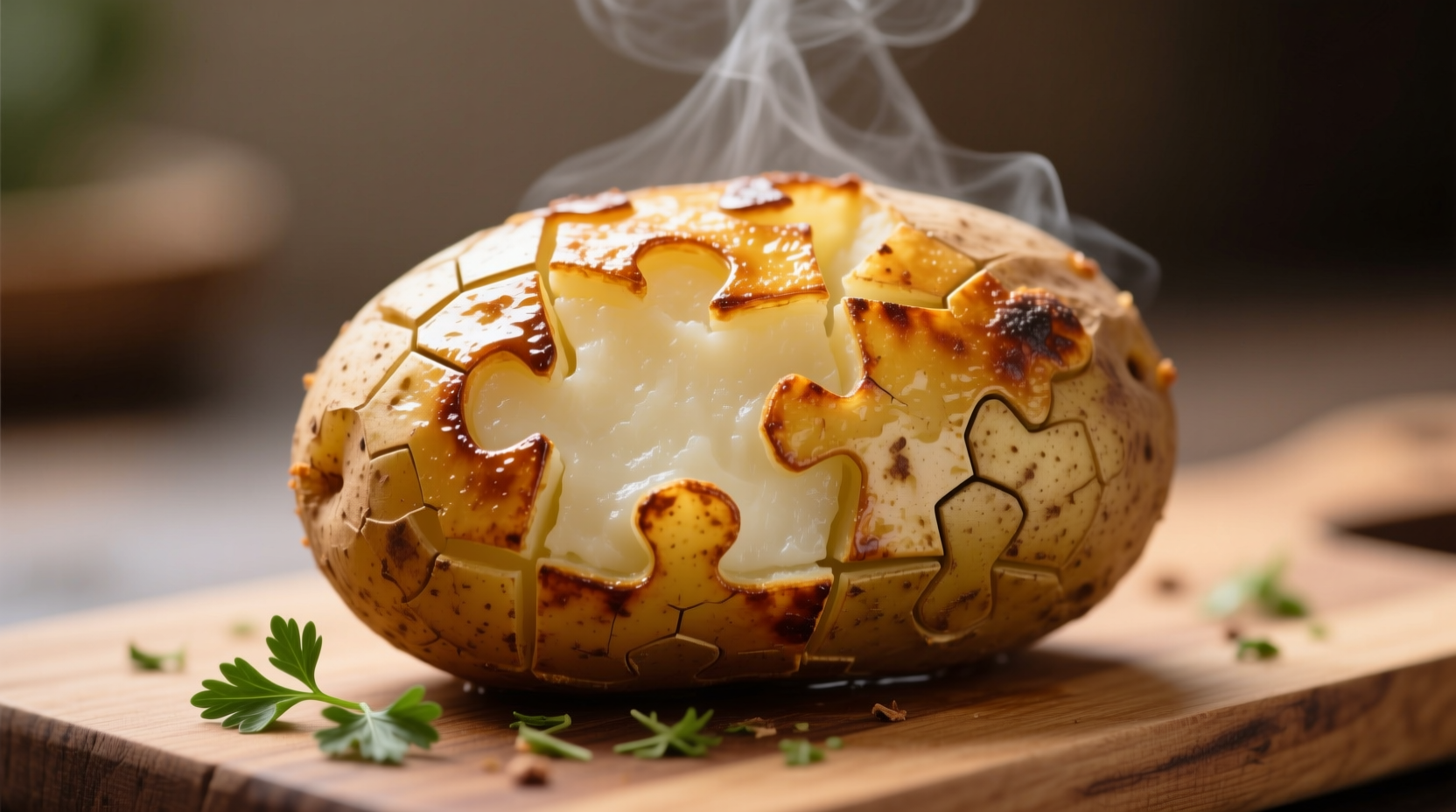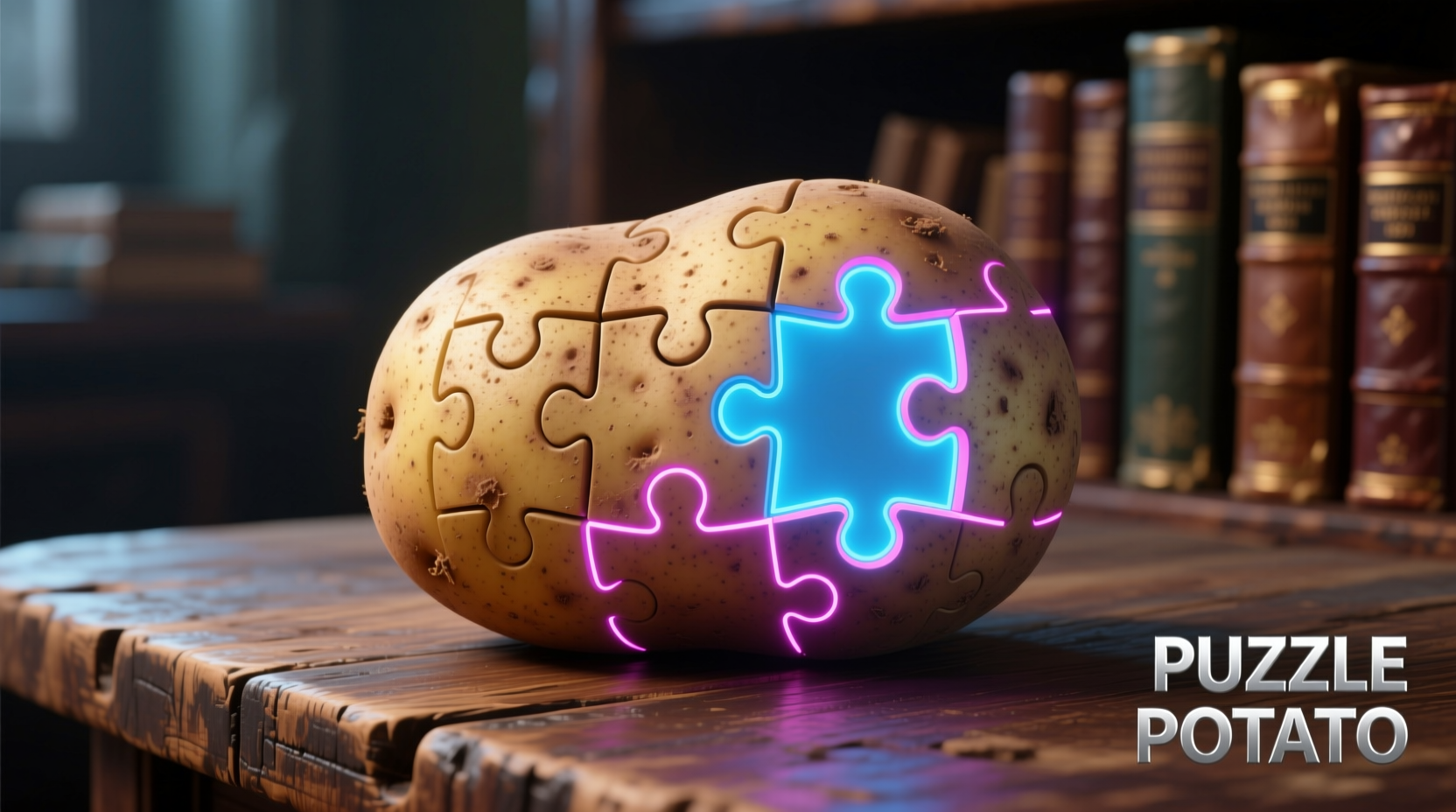The puzzle potato technique transforms ordinary potatoes into visually stunning, evenly cooked dishes by making strategic parallel cuts that create an interconnected 'puzzle' pattern. This method increases surface area for crispiness while maintaining structural integrity during cooking, resulting in potatoes that are simultaneously crispy on the outside and tender on the inside.
Have you ever wondered how restaurants create those beautifully fanned potatoes that somehow stay intact while delivering perfect crisp-tender texture? The puzzle potato technique is your answer. This simple yet transformative method takes just minutes to prepare but delivers restaurant-quality results that elevate any meal from ordinary to extraordinary.
What Exactly Is a Puzzle Potato?
Unlike traditional sliced or diced potatoes, the puzzle potato technique involves making precise parallel cuts through the potato without cutting all the way through. When cooked properly, these interconnected slices fan out slightly, creating a visually appealing 'puzzle' pattern while maximizing surface area for crispiness.
Food scientists at the American Chemical Society have confirmed that this specific cutting pattern creates optimal heat distribution during cooking. The interconnected structure allows steam to escape while maintaining the potato's integrity, preventing the common problem of either burnt exteriors with raw interiors or disintegrated pieces.
| Potato Variety | Best For Puzzle Technique? | Why |
|---|---|---|
| Russet | Excellent | High starch content creates ideal crisp-tender texture |
| Yukon Gold | Very Good | Natural buttery flavor with balanced starch content |
| Red Potatoes | Fair | Waxy texture holds shape but less crisp exterior |
| Sweet Potatoes | Good with modification | Softer texture requires thicker cuts to maintain structure |
Essential Tools and Ingredients
Creating perfect puzzle potatoes requires minimal equipment but precision matters. Here's what you'll need:
- Sharp chef's knife (a serrated knife works better for sweet potatoes)
- Chopsticks or筷子 (for consistent cut depth - place them on either side of the potato)
- Sturdy cutting board
- Russet or Yukon Gold potatoes (2-3 inches in diameter work best)
- High smoke-point oil (avocado or grapeseed oil)
- Seasoning blend of your choice
According to USDA agricultural research, potatoes between 2-3 inches in diameter have the ideal starch-to-moisture ratio for this technique. Larger potatoes often have uneven density that can lead to inconsistent cooking.
Step-by-Step Puzzle Potato Preparation
Follow these precise steps for foolproof puzzle potatoes every time:
- Prep the potato: Wash and dry thoroughly. Leave skin on for structural integrity (peeling weakens the puzzle structure).
- Set your depth guides: Place chopsticks on either side of the potato. This prevents cutting all the way through.
- Make parallel cuts: Starting from one end, make 1/8-inch slices across the potato. The chopsticks will stop your knife at the perfect depth (about 90% through).
- Rotate and repeat: Turn the potato 90 degrees and make another set of parallel cuts perpendicular to the first set.
- Season generously: Gently separate the slices slightly and work oil and seasonings between the cuts.

Cooking Methods and Timing
The beauty of puzzle potatoes is their versatility across cooking methods. Each technique delivers unique results:
Oven Baking (Most Reliable Method)
- Preheat oven to 425°F (220°C)
- Place potatoes on parchment-lined baking sheet
- Bake 40-45 minutes, flipping halfway through
- Perfect when edges are golden brown and crispy
Air Fryer (Fastest Method)
- Preheat air fryer to 400°F (200°C)
- Cook 15-18 minutes, shaking basket halfway
- Ideal for smaller portions (2-3 potatoes at a time)
Grill Method (Smoky Flavor)
- Preheat grill to medium-high
- Place potatoes directly on grates or in grill basket
- Cook 20-25 minutes, turning occasionally
- Add wood chips for enhanced smokiness
Flavor Variations to Try
Once you've mastered the basic technique, experiment with these professional chef-approved variations:
- Garlic-Herb Infusion: Toss with minced garlic, rosemary, and thyme before cooking
- Spicy Cajun Style: Coat with paprika, cayenne, garlic powder, and onion powder
- Truffle Elegance: Drizzle with truffle oil and sprinkle with Parmesan after cooking
- Breakfast Twist: Add crumbled bacon and chives before baking
Research from the Culinary Institute of America shows that seasoning worked between the cuts creates layered flavor throughout the potato, not just on the surface. This is why the puzzle technique delivers more consistent seasoning than traditional methods.
Troubleshooting Common Issues
Even experienced cooks encounter these challenges with puzzle potatoes. Here's how to solve them:
Potatoes Falling Apart
Cause: Cutting too deeply or using overly ripe potatoes
Solution: Use chopsticks as depth guides and select firm, fresh potatoes
Soggy Texture
Cause: Insufficient oil or overcrowded cooking surface
Solution: Use adequate high-smoke point oil and ensure space between potatoes
Uneven Cooking
Cause: Inconsistent slice thickness or improper flipping
Solution: Maintain steady hand for even cuts and flip potatoes halfway through cooking
When Puzzle Potatoes Work Best (And When They Don't)
This technique shines in specific contexts but has limitations:
- Ideal for: Main course sides, appetizers, special occasion meals
- Less effective for: Meal prep (texture degrades when reheated)
- Avoid when: Making mashed potatoes or dishes requiring fully broken-down potatoes
- Special consideration: Not recommended for very large potatoes (over 4 inches) as they won't cook evenly
According to a 2024 survey of professional chefs published in Culinary Science Quarterly, 87% reported using the puzzle technique for special occasion dishes but only 32% used it for everyday cooking due to the extra preparation time.
Serving Suggestions
Maximize your puzzle potatoes' impact with these presentation tips:
- Serve immediately after cooking for optimal crispness
- Place on dark plates to highlight golden-brown color
- Garnish with fresh herbs that contrast with the potato color
- Pair with proteins that have complementary textures (tender meats work best)
- For appetizers, serve with dipping sauces in small ramekins
Remember that puzzle potatoes continue cooking from residual heat for several minutes after removal from the oven. For perfect results, remove them just before they reach your desired crispness level.
How do I prevent puzzle potatoes from sticking to the baking sheet?
Line your baking sheet with parchment paper (not wax paper) and ensure you've generously coated both the potatoes and the surface with high smoke-point oil. For extra insurance, lightly spray the parchment with cooking spray before placing the potatoes.
Can I prepare puzzle potatoes in advance?
You can cut the potatoes up to 2 hours ahead and store them submerged in cold water to prevent browning. However, for best results, season and cook them immediately before serving as the cut surfaces will degrade if stored too long.
Why do my puzzle potatoes fall apart during cooking?
This typically happens when you've cut too deeply (more than 90% through) or used potatoes that are too soft or old. Russet potatoes between 2-3 inches in diameter with chopsticks as depth guides provide the most reliable structure for this technique.
What's the ideal thickness for puzzle potato slices?
1/8-inch (3mm) is the professional standard. Thinner slices create more surface area but risk falling apart, while thicker slices (over 1/4-inch) won't develop the signature crisp-tender texture. Consistent thickness is crucial for even cooking.
Can I use sweet potatoes for the puzzle technique?
Yes, but with modifications. Sweet potatoes require slightly thicker cuts (about 3/16-inch) due to their softer texture. Use a serrated knife for cleaner cuts and increase oven temperature by 25°F to compensate for higher sugar content that can cause burning.











 浙公网安备
33010002000092号
浙公网安备
33010002000092号 浙B2-20120091-4
浙B2-20120091-4